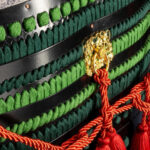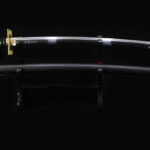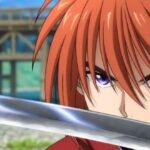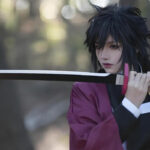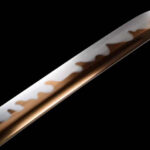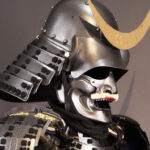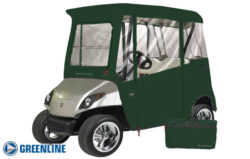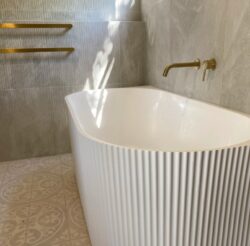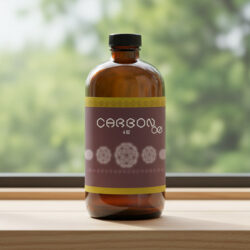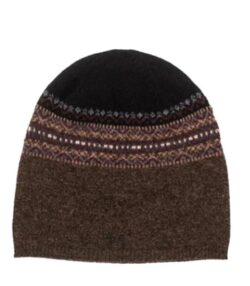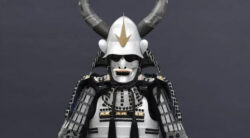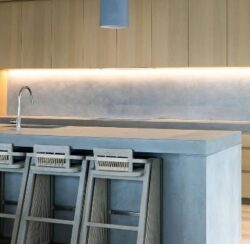How to Choose Folded Steel Samurai Swords for Collecting & Display
In Eastern sword culture, the samurai sword is not just a weapon—it is a vessel of honor, artistry, and centuries of craftsmanship. For martial arts practitioners, history enthusiasts, and serious collectors alike, a premium folded steel samurai sword represents the perfect harmony of tradition, performance, and beauty.
This guide will help you understand the historical background, forging process, steel choices, and key considerations when choosing a real katana that is ideal for both collecting and display.
1. The Historical and Cultural Significance of Samurai Swords
Samurai swords have their roots in Japan’s Warring States period, when they were essential tools of survival and honor. Over centuries, they evolved in both function and meaning:
Kamakura period – Blades were practical, sharp, and suited for close combat.
Warring States period – Longer, more curved swords emerged, optimized for cavalry and mounted strikes.
Edo period – During peacetime, the focus shifted toward artistry and ceremonial value. Ornate hilts, scabbards, and fittings turned swords into masterpieces for display and collection.
In samurai culture, the sword symbolized more than combat ability—it embodied the warrior’s spirit (Bushido), loyalty, and identity. Today, collectors admire swords not only for their functionality but also as works of art and cultural heritage.
2. What Does “Folded Steel” Mean?
When a sword is called a folded steel katana, it refers to the forging method rather than the type of steel itself.
Repeated folding & hammering – The smith heats the steel, folds it dozens of times, and strikes it into layers.
Purification – Folding removes impurities and air pockets, creating a purer, more durable structure.
Strength & flexibility – This process balances hardness with resilience, preventing brittleness and breakage.
Unique blade patterns – Folding produces hada (grain patterns) and accentuates the hamon (temper line), giving each blade a one-of-a-kind beauty.
This is why folded steel swords are so admired—they combine strength, resilience, and natural artistry in a single blade.
3. Choosing the Right Steel for Your Sword
The type of steel directly affects sharpness, durability, and collectible value.
High-carbon steel (e.g., 1060, 1095) – Extremely sharp and traditional, but requires regular maintenance to prevent rust.
Alloy steel – Elements like chromium and vanadium add hardness and corrosion resistance, great for long-term display.
5160 spring steel – Known for impact resistance, ideal for functional practice or cutting.
Folded steel – The ultimate blend of sharpness, toughness, and visual beauty—perfect for display and collection.
👉 Quick tip: If you prioritize performance, go for high-carbon or 5160 steel. If you value artistry and uniqueness, a folded steel katana is the superior choice.
4. The Forging Craftsmanship: Soul of the Sword
Every authentic samurai sword is the result of meticulous steps and masterful skill:
Steel Selection – The foundation of sharpness and durability.
Folding & Forging – Removes impurities, strengthens the structure, and forms distinctive hada.
Quenching & Tempering – Heating and rapid cooling create a hard edge; tempering ensures flexibility.
Polishing & Engraving – Reveals the natural blade patterns and may feature the smith’s signature or family crest.
This process turns steel into more than a weapon—it becomes a living piece of history and artistry.
5. Collecting and Displaying Samurai Swords
A high-quality sword deserves an equally thoughtful approach to collecting and display.
Display Options
Samurai Sword Display Stands – Available in single, double, or triple tiers, they showcase swords while protecting them.
Mini katanas or small replicas – Perfect for desks or compact spaces.
Collectible Value
Limited editions & custom swords – Unique fittings, engravings, or rare materials enhance value.
Historical authenticity – The closer the sword is to traditional forging, the more desirable it is for collectors.
Gifting a Sword
A samurai sword makes a meaningful gift, symbolizing honor, heritage, and strength. Whether for a collector, martial artist, or history enthusiast, it is a rare and thoughtful present.
6. Buying Folded Steel Samurai Swords
Online Convenience
Today, many enthusiasts samurai order online from trusted platforms like COOLKATANA, which offers:
Authentic handmade Japanese swords
Licensed anime swords (e.g., Demon Slayer, Bleach, One Piece)
Custom sword options – From blade color to fittings like tsuba (guard), tsuka (handle of a sword), and sword pommel
Offline Experience
Visiting Japanese swordsmiths, museums, or exhibitions offers an immersive way to experience the culture firsthand.
Replicas
For display, cosplay, or photography, high-quality replica swords provide affordability while maintaining aesthetic appeal.
7. How to Select the Perfect Folded Steel Katana
When choosing a sword, consider:
Purpose – Will you use it for display, practice, or collection?
Craftsmanship – Look at blade sharpness, hada, and hamon patterns.
Sword parts – A true collector examines the handle of a sword, sword pommel, tsuba, and saya (scabbard). Each part reflects artistry and balance.
Trusted sources – Buy from established makers like COOLKATANA to ensure quality and authenticity.
8. Conclusion
A folded steel samurai sword is more than an edged weapon—it is a symbol of spirit, history, and artistry.
It embodies toughness, elegance, and cultural legacy, making it perfect for collecting, displaying, training, or gifting.
By choosing a sword forged with care, you are not just buying steel—you are preserving a piece of living tradition.
👉 Discover your ideal real katana at COOLKATANA and experience the timeless craftsmanship of Japanese sword culture.
Hand Forged Japanese Samurai Katana Sword S7 Tool Steel Vacuum+Cryogenic Iron Tsuba





